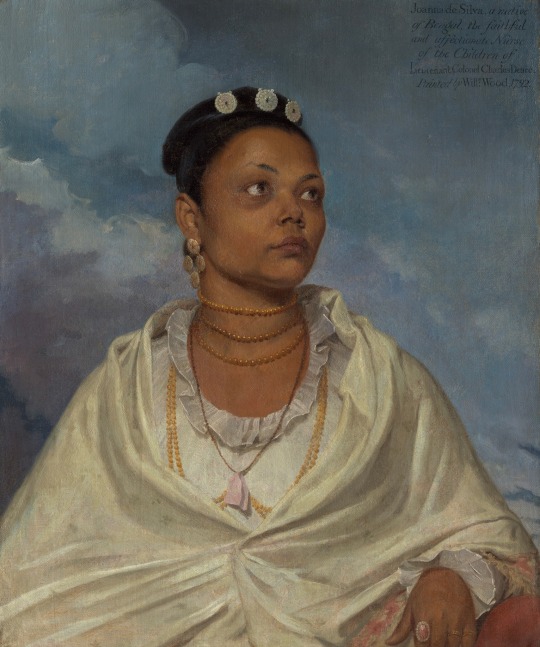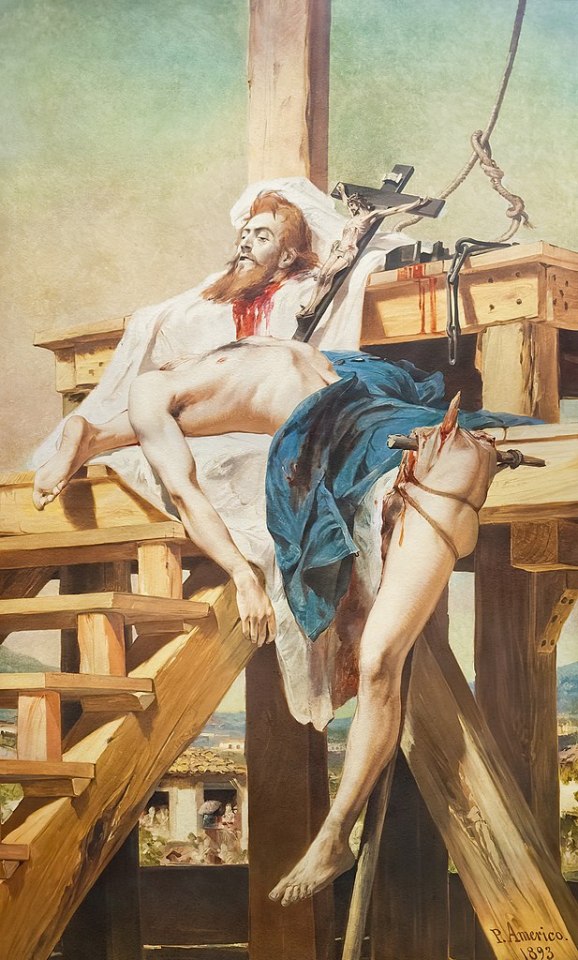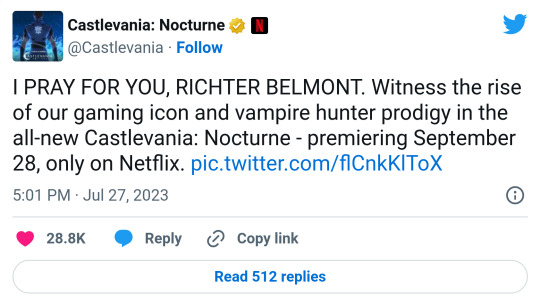#1792
Text

Over two years since original announcement, Neflix finally sets Castlevania: Nocturne release date.
The series will follow Richter Belmont during the French Revolution.
And according to Collider, there’s a chance Richard and Alejandra Reynoso might reprise their roles from the original series via flashbacks.
Castlevania: Nocturne premieres September 28 on Netflix.
#richard armitage#trevor belmont#alejandra reynoso#sypha belnades#richter belmont#james callis#alucard#adrien fahrenheit tepes#graham mctavish#vlad dracula tepes#dracula#wallachia#castlevania#castlevania nocturne#netflix#castlevania spin off#spin off#france#french revolution#1792#kevin kolde#clive bradley#samuel deats#adam deats#powerhouse animation#frederator studios#animation studio#collider#september 2023#news
319 notes
·
View notes
Text

Discovery and Chatham Approaching Cape Flattery, 29 April 1792,by Christopher Blossom (1956-)
124 notes
·
View notes
Text

Napoleon standing in the ruins of the Tuileries palace in Paris goes kind of hard ngl
#Napoleon#job#Jacques Onfroy de Bréville#Jacques Marie Gaston Onfroy de Bréville#napoleon bonaparte#frev#French Revolution#1792#tuileries#Tuileries palace#napoleonic era#19th century#first french empire#french empire#napoleonic#bonaparte#France#la révolution française#art#illustration#cartoon#palace#1790s#1700s#18th century#first french republic
174 notes
·
View notes
Photo

Deux jeunes femmes s’embrassant, Louis-Leopold Boilly, 1790-94
#deux jeunes femmes s'embrassant#Louis-leopold boilly#Louis Leopold boilly#boilly#1790#1791#1792#1793#1794#1790s#1700s#18th century#painting#art
139 notes
·
View notes
Text

Oil painting, 1792, British.
Portraying Joanna de Silva in a white dress and cream shawl.
Painted by William Wood.
Met Museum.
#1792#1790s#1790s dress#1790s painting#1790s britain#Britain#shawl#Joanna de silva#William wood#met museum
27 notes
·
View notes
Photo

Plate 45. Moths. Encyclopédie méthodique, ou, par ordre de matières. 1792.
Internet Archive
#moths#collection#zoology#insects#nature illustration#encyclopedia illustration#nemfrog#1792#18th century
833 notes
·
View notes
Note
Hey there! :) Do you happen to know what was Lafayette's opinion on Robespierre as a person and/or as a member of the National Assembly? Did he left any declaration in his memoirs? As far as I know, their different political views led them sometimes into arguments and slanders.
Have a nice day!
Dear @faxelange,
in short, they were not on the best of terms – not at all. The disfavour was mutual as neither Robespierre liked La Fayette nor did La Fayette liked Robespierre.
Despite this, there is not nearly as much commentary on Robespierre in La Fayette’s letters and Memoirs as one might expect. The references that are made are mostly general statements about Robespierre and not specific about their relationship. Generally speaking, La Fayette wrote in his Memoirs about what he thought valuable for his readers and important to mention. I think he judged his disagreements with Robespierre and Robespierre in general, at the point of him writing his Memoirs (1830s), as simply no longer important. It would be easier to give a detailed description of Robespierre’s opinion of La Fayette than the other way around since we have many statements by Robespierre.
The relationship between Robespierre and La Fayette was during the first years of the Revolution civil, or better, nonexistent. Things changed when La Fayette wrote on June 16, 1791 a lengthy letter to the Legislative Assembly, criticizing political groups as a potential thread to the constitution and the stability of France – the jacobins were here his primary target.
Although he railed against factionalism of all varieties, the Jacobins were his primary target. “Organized like a separate empire … blindly controlled by a few ambitious leaders,” the Jacobins were, as he put it, a “sect,” a “distinct corporation in the middle of the French people, whose powers they usurp by subjugating their representatives.” Read into the record two days later and republished in newspapers of every political stripe, the letter generated heated debate.
Laura Auricchio, The Marquis – Lafayette Reconsidered, Vintage Books, New York, 2015, p. 258.
Two days later during a meeting of the jacobins, Robespierre stated:
Strike down Lafayette and the nation is saved.
Laura Auricchio, The Marquis – Lafayette Reconsidered, Vintage Books, New York, 2015, p. 259.
Things went downhill rather quickly after that.
In La Fayette memoirs there are two mentioning’s of Robespierre, both are rather indirect, as they detail public attacks of La Fayette’s character that Robespierre had some connection with.
It would occupy too much space to detail all the hostilities of the anarchists against Lafayette; their defamations in the Patriot and the Chronicle were pushed to the most insane excess. Robespierre attacked him at the jacobins, first requiring that he should not be called upon to prove what he advanced. The club itself formally denounced him at the bar of the assembly, by the mouth of Collot d’Herbois. Some members of this faction alleged as proofs of his criminality certain letters, which, when read, were received with patriotic applause.
Marquis de La Fayette, Memoirs, Correspondences and Manuscripts of General Lafayette, Vol. 3, Craighead and Allen, New York, 1837, pp. 336-337.
We can see very clearly in this passage that La Fayette’s problem was not with Robespierre alone and while this excerpt gives seemingly more insight into Robespierre’s opinion of La Fayette, the way the event is retold also tells us a lot about La Fayette’s opinion.
The second part is from a letter that La Fayette wrote his wife Adrienne on April 18, 1792:
Parties are at present divided in this manner [the question of war]. Robespierre, Danton, Desmoulins, &c., &c., form the jacobin sink. These puppets are moved behind the scene, and serve the court by disorganizing all things, by exclaiming that we are beaten without resource and by attacking Lafayette, “who has deceived, they say, the people and the court, guided the conduct of the far less culpable M. de Bouillé, and who is more dangerous himself than the aristocracy.” (…) The other party, called the high jacobins, and which supports the present ministry, is composed of Bordelais, the abbé Sièyes, Condorcet, Roederer, &c. These men hate and fear Robespierre, but dare not render themselves unpopular.
Marquis de La Fayette, Memoirs, Correspondences and Manuscripts of General Lafayette, Vol. 3, Craighead and Allen, New York, 1837, pp. 411-412.
Again, La Fayette was not only in disagreement with Robespierre. Today Robespierre is often presented as the one and only embodiment of the Jacobins but there were many more and yes, Robespierre was certainly even back then a prominent and influential member, but La Fayette’s disagreements were with the jacobins as a whole as much as with Robespierre personally.
Perhaps it is easier to dissect La Fayette’s opinion based on what he did not thought about Robespierre. In the letter to his wife that is already quoted above, La Fayette also wrote:
Such is my situation: I belong, as I wrote before to you, to no party except to that of the French nation; but my friends and I will serve whoever will do good, defend liberty and equality, and maintain the constitution by repulsing everything tending to render it aristocratic or republican; and when the national will, expressed by the representatives chosen by nation and by the king, shall tell us that war is inevitable, I will do all that lies in my power to promote its success.
Marquis de La Fayette, Memoirs, Correspondences and Manuscripts of General Lafayette, Vol. 3, Craighead and Allen, New York, 1837, p. 413.
These were the things that La Fayette supported and believed in, this was his agenda. In not agreeing with Robespierre, we can assume that La Fayette felt as if Robespierre did not meet his principles. Another point is raised in this statement:
(…) by repulsing everything tending to render it aristocratic or republican (…).
Robespierre was without a question on the republican side.
This was all quite political but since La Fayette saw political opinions as the expression of underlaying principles, a political disagreement was often, not always though, also a personal disagreement, although things did not usually escalate like they did with Robespierre.
I hope this cleared things up a bit and I hope you have/had a lovely day!
#ask me anything#marquis de lafayette#la fayette#maximilien robespierre#french history#american history#letter#french revolution#history#1792#faxelange#adrienne de lafayette#adrienne de noailles#1791
34 notes
·
View notes
Photo

𝔗𝔦𝔯𝔞𝔡𝔢𝔫𝔱𝔢𝔰 𝔮𝔲𝔞𝔯𝔱𝔢𝔯𝔢𝔡 (𝔗𝔦𝔯𝔞𝔡𝔢𝔫𝔱𝔢𝔰 𝔢𝔰𝔮𝔲𝔞𝔯𝔱𝔢𝔧𝔞𝔡𝔬) 𝔟𝔶 𝔓𝔢𝔡𝔯𝔬 𝔄𝔪é𝔯𝔦𝔠𝔬 յՑգՅ
#Pedro Américo#Tirandentes#Tiradentes quartered#1893#19th century#19th Century Art#Tiradentes esquartejado#Inconfidência Mineira#Brasil#Brazil#art#painting#artwork#Joaquim José da Silva Xavier (tiradentes)#1792
384 notes
·
View notes
Note
Hello, in a recent post you mentioned that we have Philippe Le Bas' passport (or just its text?) Do you maybe have a source for the full text/do you know what it said? I'd love to read the rest of the description.
Yes! Paul Coutant, alias Stéfane-Pol, published two passports for Le Bas in his Autour de Robespierre : Le Conventionnel Le Bas, and I would be surprised if there aren’t other passports for him at the National Archives as well, as a representative on mission. NB: It seems I misremembered his height. Le Bas was only 5 pieds 5 pouces; in other words, around 176 cm.
The published ones read as follows:
ÉGALITÉ, LIBERTÉ.
Au nom de la Nation.
Département du Pas de Calais, district de Saint-Pol, municipalité de Saint-Pol. Laissez passer Philippe-François-Joseph Le Bas, homme de loi et député pour la Convention nationale, citoyen français, domicilié à la municipalité de Saint-Pol, district du même lieu, département du Pas-de-Calais, âgé de vingt-huit ans, taille de cinq pieds cinq pouces, cheveux et sourcils châtains, yeux gris-bleu, nez court un peu retroussé, bouche petite, menton rond, front large, visage ovale ; et prêtez-lui aide et assistance en cas de besoin.
Délivré à la maison commune le 15 septembre 1792, l’an IV de la Liberté.
&
La loi.
Laissez passer le sieur Philippe Le Bas, français domicilié en la ville de Saint-Pol, département du Pas-de-Calais, district de Saint-Pol, âgé de vingt-huit ans, taille de cinq pieds cinq pouces, cheveux et sourcils châtains, yeux gris, nez élargi, bouche moyenne, menton long, visage ovale, front haut ; et prêtez-lui aide et secours en cas de besoin.
Donné à Frévent, même département et district, sous notre signature et la sienne, le seize septembre mil sept cent quatre-vingt-douze, l’an quatre de la Liberté, le 1er de l’Égalité.
Which back in my LJ days, when I still did (admittedly rather mediocre) translations, I translated like this:
EQUALITY, LIBERTY.
In the name of the Nation.
“Department of Pas-de-Calais, district of Saint-Pol, municipality of Saint-Pol. Let pass Philippe-François-Joseph Le Bas, man of law and deputy for the National Convention, French citizen, domiciled in the municipality of Saint-Pol, district of the same place, department of Pas-de-Calais, aged twenty-eight years, height five feet five inches, chestnut-brown [châtain] hair and eyebrows, grey-blue eyes, short- and slightly snub-nosed, small mouth, round chin, large forehead, oval face; and lend him aid and assistance in case of need.
Delivered to the maison commune on 15 September 1792, Year IV of Liberty.
&
The law.
Let pass the sieur Philippe Le Bas, Frenchman domiciled in the city of Saint-Pol, department of Pas-de-Calais, district of Saint-Pol, aged twenty-eight years, height five feet five inches, chestnut-brown [châtain] hair and eyebrows, grey eyes, broad nose, medium-sized mouth, long chin, oval face, high forehead; and lend him aid and help in case of need.
Given in Frévent, same department and district, under our signature and his, the sixteenth September seventeen ninety-two, year four of Liberty, the 1st of Equality.
30 notes
·
View notes
Text

Death of the Princess de Lamballe (1908) by Leon Maxime Faivre
After refusing to swear "hatred to the King and the Queen and the monarchy", Marie Thérèse Louise of Savoy, Princesse de Lamballe, was captured and killed by an angry mob in the September Massacres during the French Revolution in 1792.
(more info)
#Death of the Princess de Lamballe#1908#1900s#Leon Maxime Faivre#French Revolution#1792#art#painting#September Massacre#Miss Cromwell
5 notes
·
View notes
Text

#richard armitage#trevor belmont#alejandra reynoso#sypha belnades#richter belmont#james callis#alucard#adrien fahrenheit tepes#graham mctavish#vlad dracula tepes#dracula#wallachia#castlevania#castlevania nocturne#netflix#castlevania spin off#spin off#france#french revolution#1792#kevin kolde#clive bradley#samuel deats#adam deats#powerhouse animation#frederator studios#animation studio#september 2023#official trailer#news
231 notes
·
View notes
Photo

Partitions of Poland - 1792, 1793, 1795.
by aresten_dmp
75 notes
·
View notes
Text

La bañista (Élisabeth Vigée Lebrun, 1792)
#art#18th century art#18th century painting#1700s#1790s#élisabeth vigée lebrun#🇫🇷#julie lebrun en baigneuse#the bather#1792#timeless beauty#aeterna venustas#el eterno femenino
23 notes
·
View notes
Text

There really is a whole genre of Napoleon standing in the Tuileries looking nonchalant during the French Revolution artwork
#Napoleon shitposting#Napoleon#napoleon bonaparte#Bonaparte aux Tuileries - 10 août 1792#Maurice Réalier-Dumas#19th century#napoleonic era#first french empire#napoleonic#french empire#frev#1792#french revolution#la révolution française#Tuileries#Tuileries palace#Swiss Guard#napoleon memes#Napoleon meme#history memes#history meme#France#France memes
145 notes
·
View notes
Text

Highbury Assembly House, near Islington, kept by Mr. Willoughby, published 1792
From the Victoria and Albert Museum
4 notes
·
View notes
